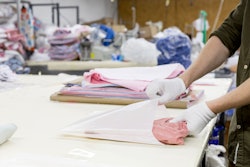
The Coronavirus disease (COVID-19) pandemic changed the behavior of people around the world. A restaurant visit transformed into a food delivery, the trip to the mall became a virtual shopping spree. The result: After years of packaging being condemned as harmful to the environment, people now appreciate things being wrapped up tightly. Especially single-use plastic packaging has made a surprising comeback.
As of mid-March, U.S. online purchases of groceries had grown substantially compared to the first four weeks of January. The Coronavirus e-commerce effect has been observed in both delivery patterns and online shopping. During the week March 30 through April 5, online sales increased by 133% — a 42 percentage increase from the week before. And all those groceries and other online purchases will be packaged to a certain degree in plastic.
The problems around packaging have existed for decades and largely remain unaddressed. If we continue like this, a billion tons of plastic will be added to the Earth by 2040. With limited infrastructure and poor recycling rates, that plastic is destined for our oceans, beaches and drinking water. Microplastics have already been detected in locations including the Alps, the Arctic remote islands – and the human body.
Will COVID-19 stop sustainable packaging?
Even after the pandemic, e-commerce is here to stay as many consumers have come to prefer the associated safety and convenience benefits. However, this growth in e-commerce sales will continue to drive an environmental crisis spurred by consumers’ appetite for packaged products greatly outpacing the global infrastructure’s ability to manage, contain and reuse these materials. Unfortunately, the packaging industry has gotten so good at producing packaging that it is more cost-effective to throw packaging away after a single use than it is to reclaim it.
Thankfully, early concerns about a Coronavirus-driven pullback in the consumer and brand owner commitment to more sustainable packaging haven’t materialized. Initially, there were fears that the pandemic would stop or delay sustainable packaging initiatives that had gained significant momentum since 2017. However, the strength of the sustainable packaging movement has remained through the pandemic, validating that sustainable packaging has become a key business driver. Sustainable packaging has evolved beyond being a trend and has become a key priority for consumers, brands and the investors.
Infrastructure is key
One key issue is a lack of global infrastructure to collect, process and reintroduce post-consumer packaging back into a circular economy. The economics are just not there. Without government and industry funding, virgin materials will still be cheaper and easier to process than reclaimed packaging. The lack of scale is so bad that several brands with strong commitments for recycled content are taking stakes in startups to assure they can get access to the materials they need to meet their needs.
Plastic films remain one of the most challenging packaging formats. The material is not compatible with existing recycling equipment. If introduced, it binds up equipment, causing shutdowns for cleaning and removal. A pilot launched in 2019 and funded by Materials Recovery for the Future has one recycling facility in Pennsylvania testing equipment upgrades to process thin film plastics. This is only one of more than 600 recycling facilities in the United States that would also need equipment upgrades. All this can prove the ability to process thin film plastics, but we still need an aftermarket for the recycled materials. Ultimately, economics will drive any significant progress in this area.
Post-pandemic sustainability
There’s still a lot to be done in the world of sustainable packaging. In the “New Normal” that will contain more e-commerce and packaging for hygienic reasons, it’s more important than ever to be smart and invest in packaging that is customer friendly, communicates the right brand message and has minimal impact on the planet.
If you need a point to start, consider joining or following one of the many foundations that have been addressing the topic for a long time. Organizations have brought awareness to the use of packaging and the harmful effects of the mismanagement of packaging and plastic waste. These organizations, foundations and consortiums have been platforms for setting aggressive sustainable packaging goals and have joined forces to solve some of packaging’s most difficult challenges.



















